The experts shock me with a surprising achievement in a crowded field of arguably the greatest of the older California Cabernets. Read the compelling story and see the results of our blind tasting:
25 – 50 year old California Cabernets (1973-1999)

Spoiler alert! Here is the end of the movie first. This photo is from the big reveal – after the tasting.
These 11 wines were carefully opened, decanted, bagged, numbered, and poured. These wines are mostly from my personal cellar from when I first became interested wine starting in my freshman year in college and up to my very first garage-made wine twelve years later.

Heitz Cellars, Cabernet, Napa Valley, 1982, “Martha’s Vineyard”

Stephen Zellerbach Vineyard, Cabernet, Alexander Valley, 1978 (Hanzell)

Sebastiani Winery, Cabernet, Proprietor’s Reserve, ‘North Coast Counties’, 1977

Beringer, Cabernet, Napa Valley, Estate, ‘Centennial Cask Selection’, 1973
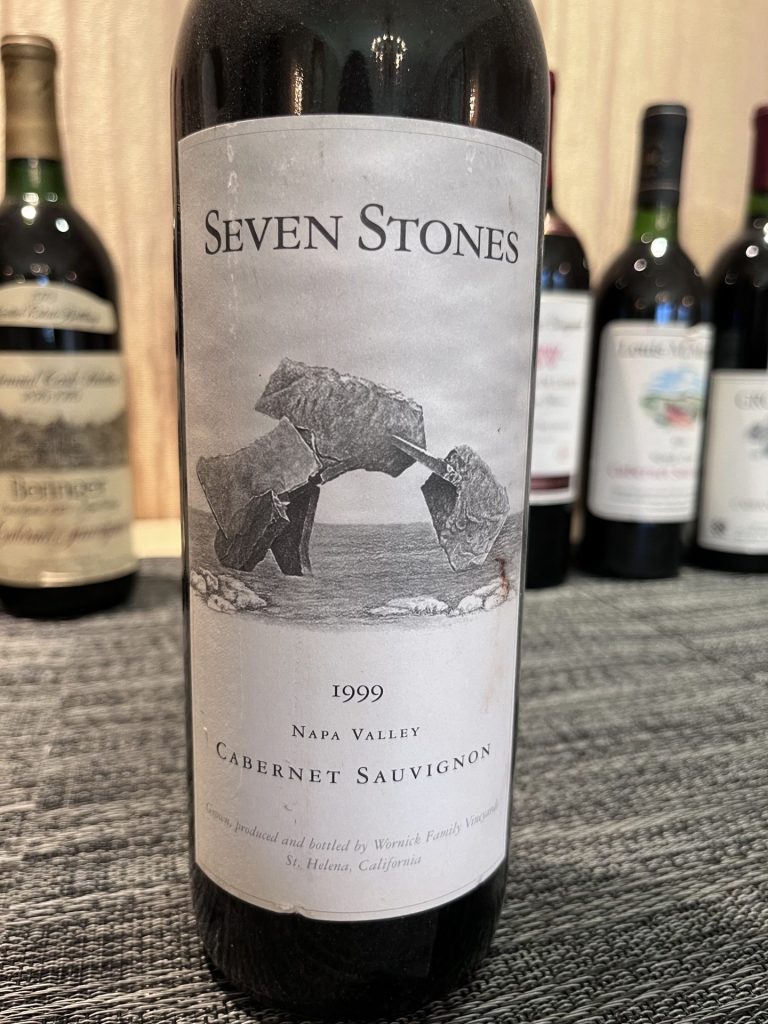
Seven Stones, Cabernet, Estate, Napa Valley, 1999 (the very first vintage, produced by me in the estate’s garage)
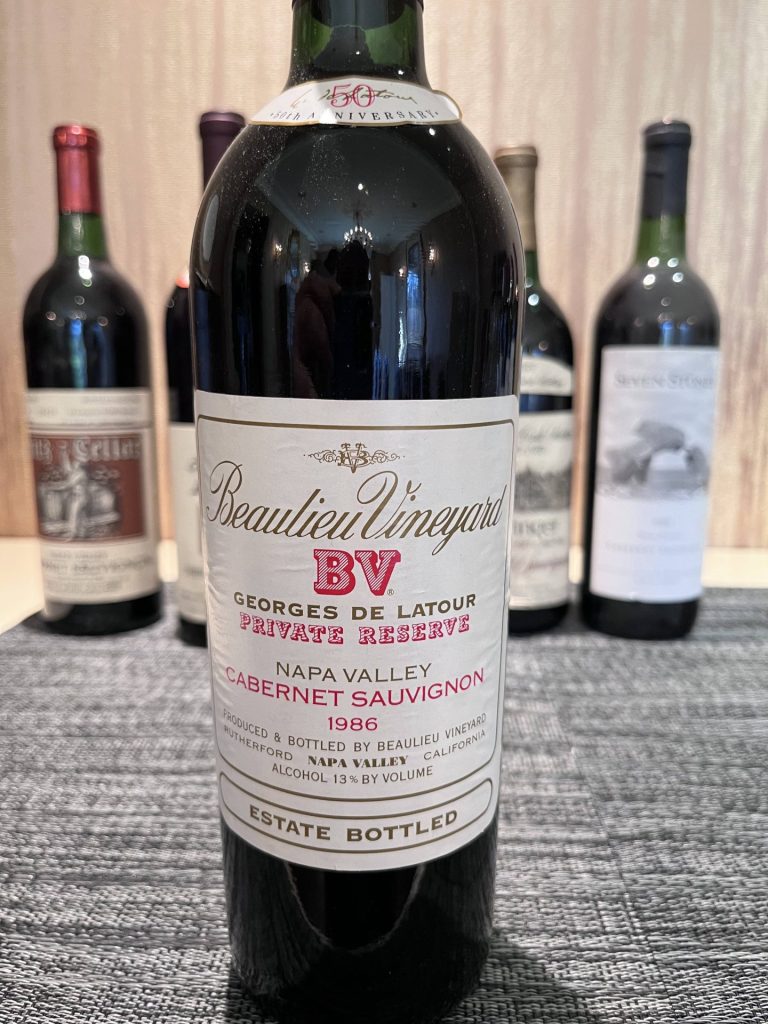
Beaulieu Vineyard, Cabernet, Napa Valley, ‘Georges De Latour Private Reserve’, 1986

Beaulieu Vineyard, Cabernet, Napa Valley, ‘Georges De Latour Private Reserve’, 1991
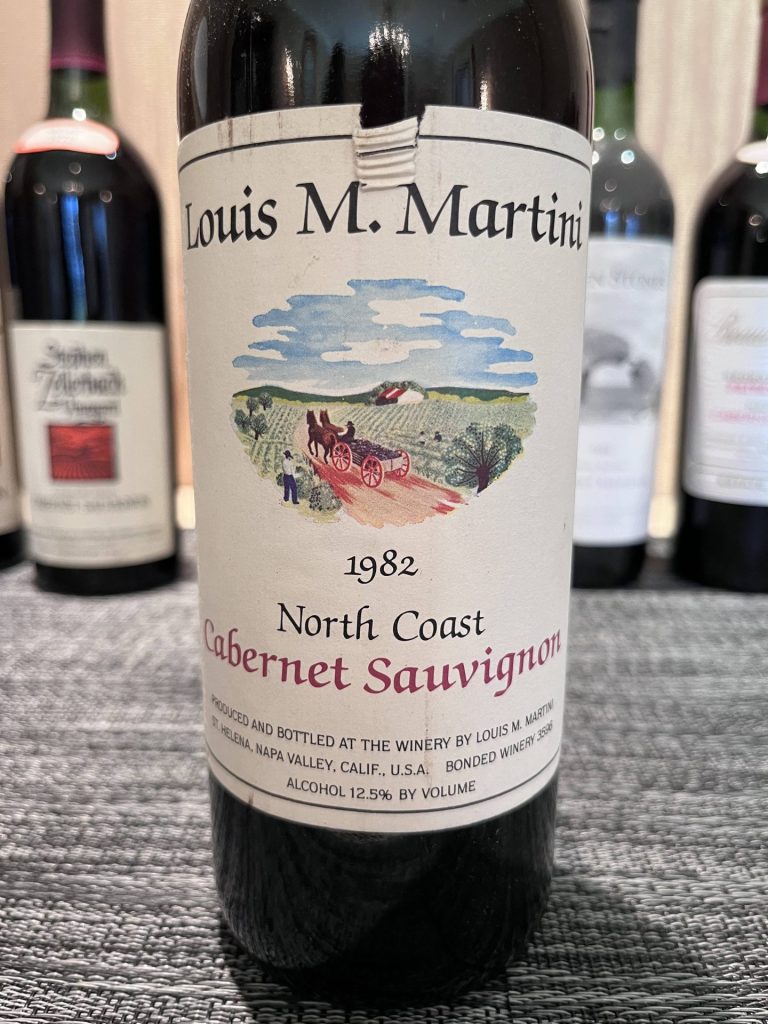
Louis M. Martini, Cabernet, North Coast, 1982

Grgich Hills, Cabernet, Napa Valley, 1984

Firestone Vineyard, Cabernet, “Vintage Reserve”, Santa Ynez Valley, 1988
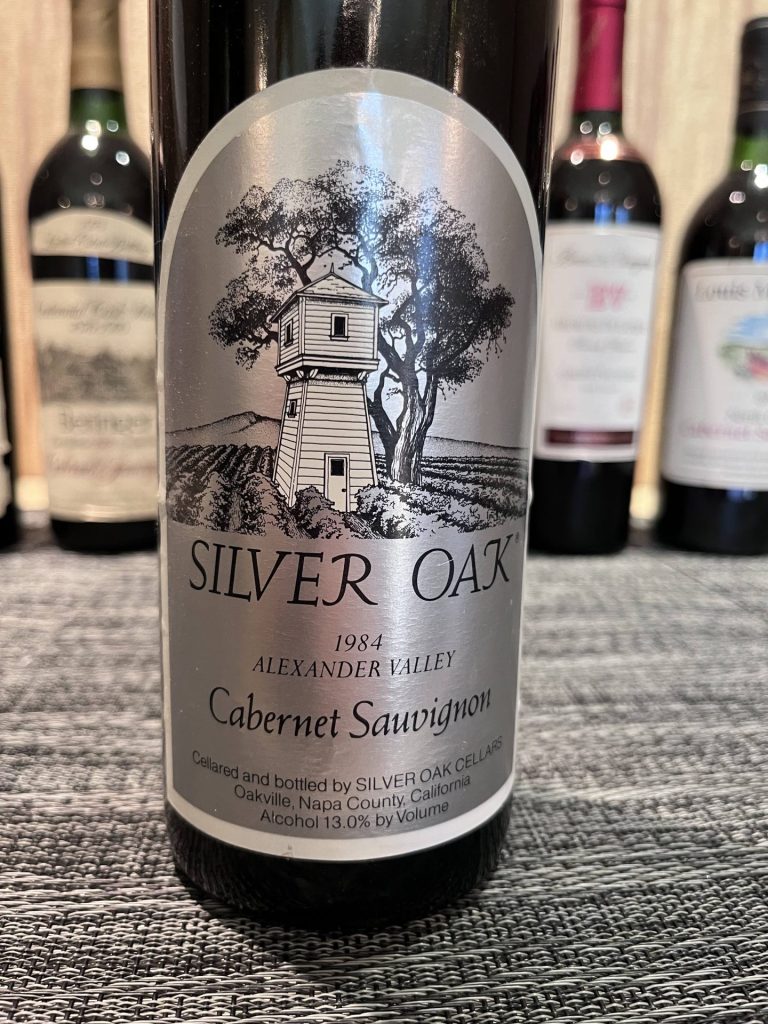
Silver Oak, Cabernet, Alexander Valley, 1984
The results
Each taster scored their top 3 and bottom 1 wine (shown here).
The top half of this page is the individual scoring, the bottom half are the actual bottle codes. After the tasting and scoring, the list of wines was provided to the panel.
As a second thought experiment, before revealing the actual bottles, tasters attempted to match the 11 wines tasted to the printed list of 13 possible wines shown. The 2 French wines (from my father’s cellar) were not included in the tasting and were simply on the printed list as decoys – to see if anyone would take the bait. A few did.
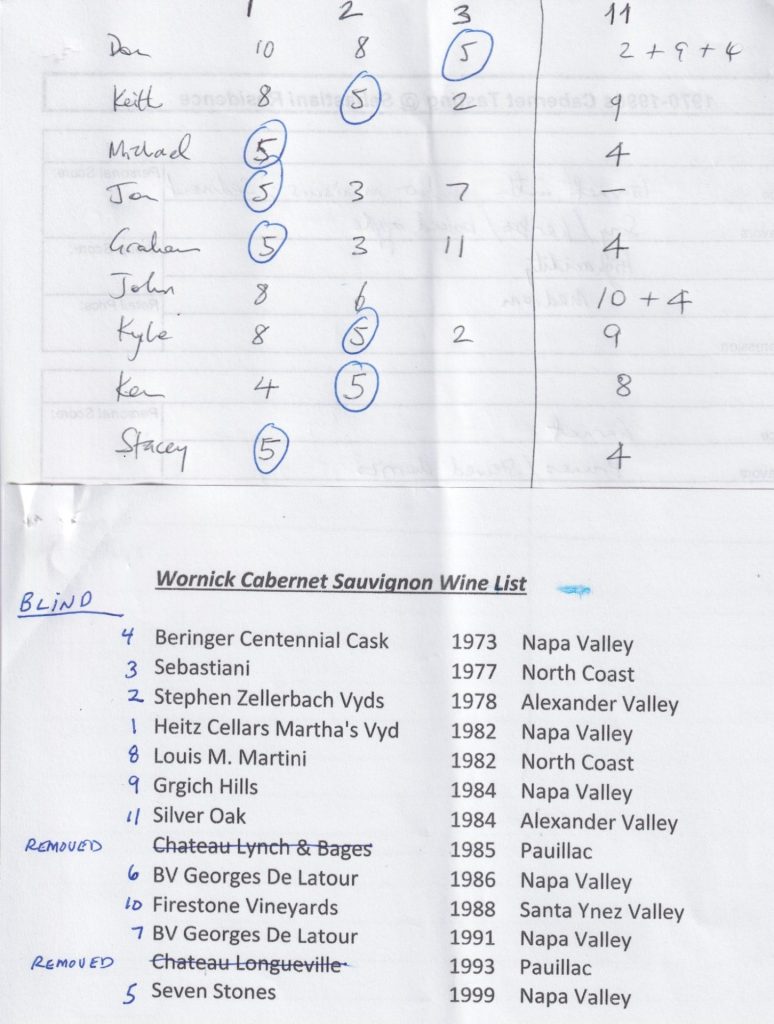
I could not believe my eyes! The clear winner? The 1999 Seven Stones! What? One of the first wines I ever produced. Not commercially either. Just made as a garage wine for our family.
Was this for real? Indeed it was.The tasting was absolutely blind. The results completely legitimate. Tabulations were scored by a very reliable accountant.
Story: The Seven Stones, Cabernet, Napa Valley, 1999 was the very first wine produced from the Seven Stones vineyard in St. Helena, Napa Valley. Planted by me in 1996 at my parent’s estate in St Helena. We were still living in Burlingame, Ca., and I had only just started my vineyard development business above Silicon Valley. That company is still operating, see this link: La Honda Winery and Post and Trellis Vineyards in Redwood City, California. The 1999 was one of the very first wines of my career – now 25 years ago. I didn’t have any formal equipment, fermented it in the garage, no drains, no press, no filter, just raw manual labor all the way through to hand bottling and labeling the 2 barrels, about 50 cases. The 1999 vintage was never sold to the public, only consumed by our family. There might be a dozen bottles still around. But the ’99 is what lead to the eventual commercialization of Seven Stones, which now garners incredibly high critic’s scores and sells out every year.
Side note: That 1999 Seven Stones was a combination of amazing grapes and some good luck. With an undergrad degree in geology, years of field work, followed by an MBA; a decade later I took a few extension courses at Davis. And interned for a few weeks during harvest at the vaunted Staglin Winery in Rutherford, Napa. The winemaker at that time was Andy Erickson, now of Screaming Eagle and Leviathan and Favia, among others. But I was the very lowest man on the totem pole and naturally spent the entire “learning experience” dragging hoses and cleaning tanks. Those are the rudimentary skills I had to apply to the 1999 vintage.
1970’s panel “Winners” and “Worst of the Best” – details on the scores (we were stunned, and if you weren’t there you might not believe it):
Best of the best:
- Seven Stones, Cabernet, Napa Valley, 1999 was the clear winner overall. I alone knew that Seven Stones was the somewhere in the lineup, but I didn’t know where? No one else had a clue that a Seven Stones wine was in the tasting until after the reveal. And as proof of the ‘blind’ results, I actually chose the group’s least favorite wine as my personal favorite (ever the contrarian, as you’ll see below). One note – to be completey fair, the 1999 Seven Stones was the youngest wine in the lineup, and perhaps therefore the ‘freshest.’
- Louis M Martini, North Coast, 1982 – with arguably the second highest scores, we all just about fell off of our chairs as this wine sold for $3.79 at the time and had a peel-off plastic capsule. But, the cork was in superb condition. It was considered a spaghetti-red table wine at the time and likely not ever intended to go up against these more expensive titans.
- Sebastiani, Cabernet, Proprietor’s Reserve, North Coast Counties, 1977 and Stephen Zellerbach Vineyard, Cabernet, Alexander Valley, 1978 were also in the running for favorite, as were several other wines vying for a place in the top 3. I was pleased for Don that his family’s wine showed so well. I was a nervous wreck knowing that our host’s family’s wine was hiding somewhere in that lineup.
Worst of Best: There really and truly were no bad wines. Not a single bottle was badly oxidized. And the ullage was excellent for all bottles:
- Beringer, Cabernet, Napa Valley, Estate, ‘Centennial Cask Selection’, 1973 – there was near unanimity in the group of this wine being the least favorite. This surprised me as I had posted it as my favorite wine. I felt it had fantastic aromas on the nose, and a depth of flavor, but others felt it was somewhat pruny and over the hill. Still available on some re-sale sites for $350.
- Grgich Hills, Cabernet, Napa Valley, 1984 – this wine garnered a few votes for least favorite. And the cork was in superb shape. So who knows? Grgich was and remains a well respected Napa winery. So many things contribute to the condition of a wine after 25-50 years. Found on some re-sale sites for $160-$300.
The Players

A pause in the action for a quick photo. At this point we’ve quietly tasted and made notes on 5 of the 11 wines. In this tasting, I invited some of my favorite colleagues from the wine world – winemakers, collectors, customers, and consultants. But I forgot to ask permission this time around, so I am afraid I cannot identity most of them.

Having a laugh: Stacey Clarke, Principal owner of Treehouse (the brand development company behind the spring 2023 launch of our Sonocaia estate Sagrantino) and me, Ken Wornick (Sonocaia, Dysfunctional Family, and Hydeout)
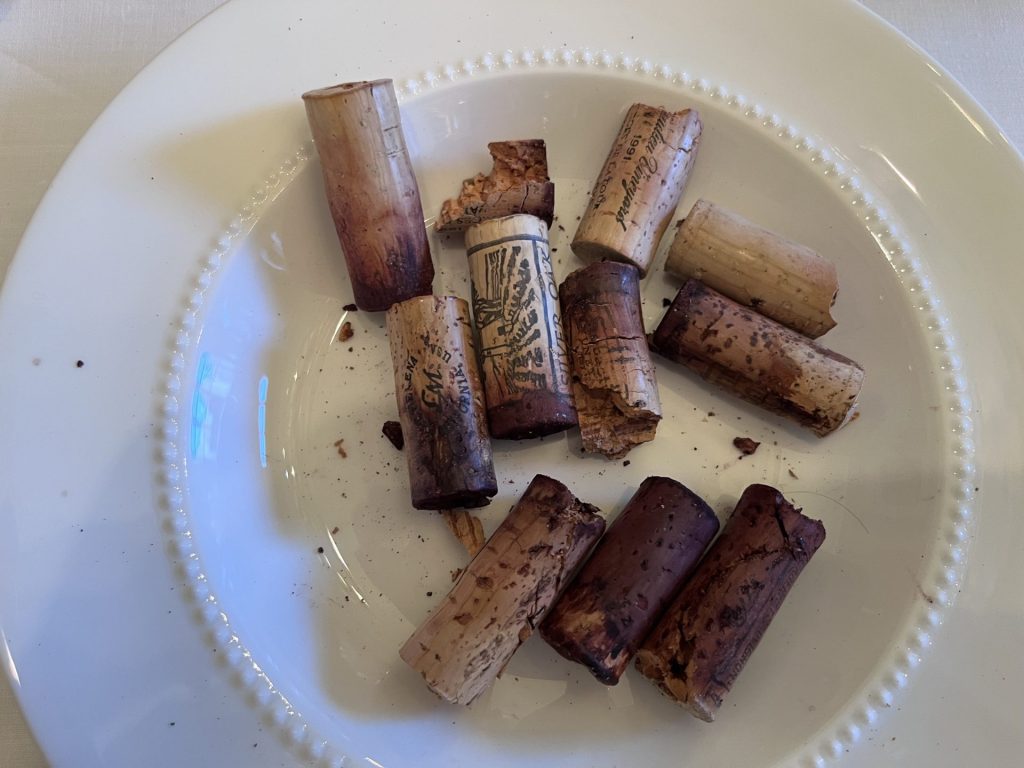
Many of the old corks were in very fine shape, likely due to the quality of the producers, and the excellent storage history, but a few disintegrated on contact and had to be very carefully extracted and wine decanted.
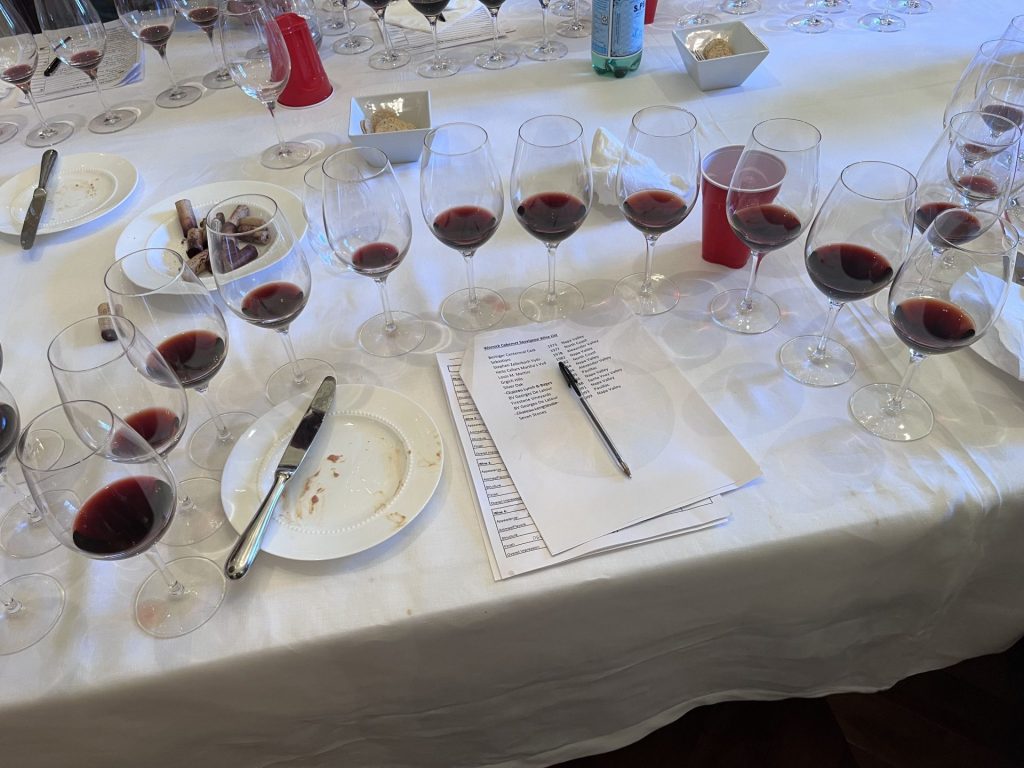
11 wines lined up and quietly tasted blind. Then tasters were supplied with a list of 13 wines, out of order, and had to guess which 11 wines were which.
Honorable mention – one of our winemaking colleagues brought a Hudson Valley Torchon Of Foie Gras (see the empty plate). It went so perfectly with our tasting. Also of note, the ducks are apparently not stuffed with feed (as with days of old). Their website says – the Moulard is a cross between the white farm duck, the Pekin, and a South American duck, the Muscovy. The Pekin has a mild flavor; the Muscovy, a gamy flavor. When the two breeds are crossed, they produce a high quality, deliciously unique flavor sought after by the finest chefs worldwide. Moulard ducks have a special ability to store fat in the liver. Like the Muscovy, they are ground-foraging ducks. Moulards don’t fly and are not fans of open water. These characteristics make the Moulard the ideal breed for producing foie gras.. The website says: Don’t Sweat the technique! The Torchon of Foie Gras is the ultimate cold preparation. Translating to “Towel” in French, its name is a result of the preparation method where the Foie Gras was traditionally tied in a kitchen towel, rolled, poached, and hung to chill for several days. The torchon of Foie Gras is a labor of love that we have refined for your convenience and enjoyment. Its cylindrical shape makes for an easy and impressive slice & serve that is guaranteed to delight.
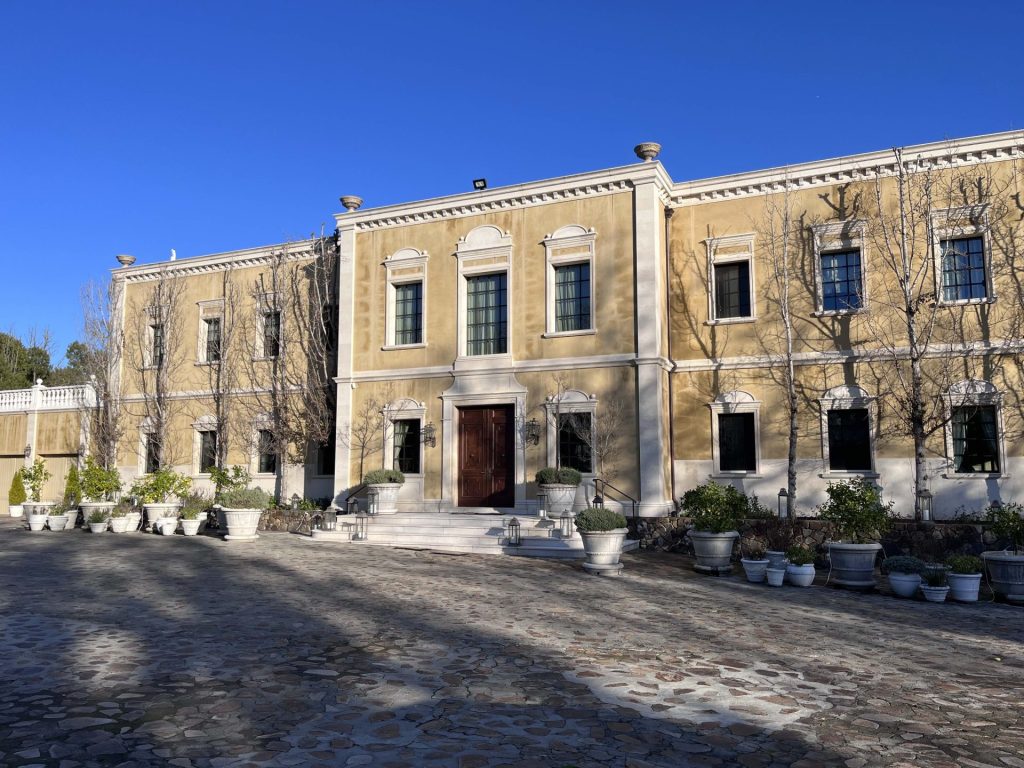
The scene of the crime, the home of our very gracious host, Don Sebastiani Sr. of Sonoma. My thanks as always to Keith Casale, CFO of Landers Curry, who assisted Don (and me) in organizing this tasting.
Chicken Murder, Bobcat style

Went for the usual collection of chicken eggs at dusk, found this sad scene of feathers but no chicken – one of the most productive and peaceful of our flock – a Buff Orpington chickens was killed. Looks like it was pulled through a hole in the fence and dispatched just outside the coop door. This might be the first time a bobcat has taken a chicken. For us, it’s usually the hawks.
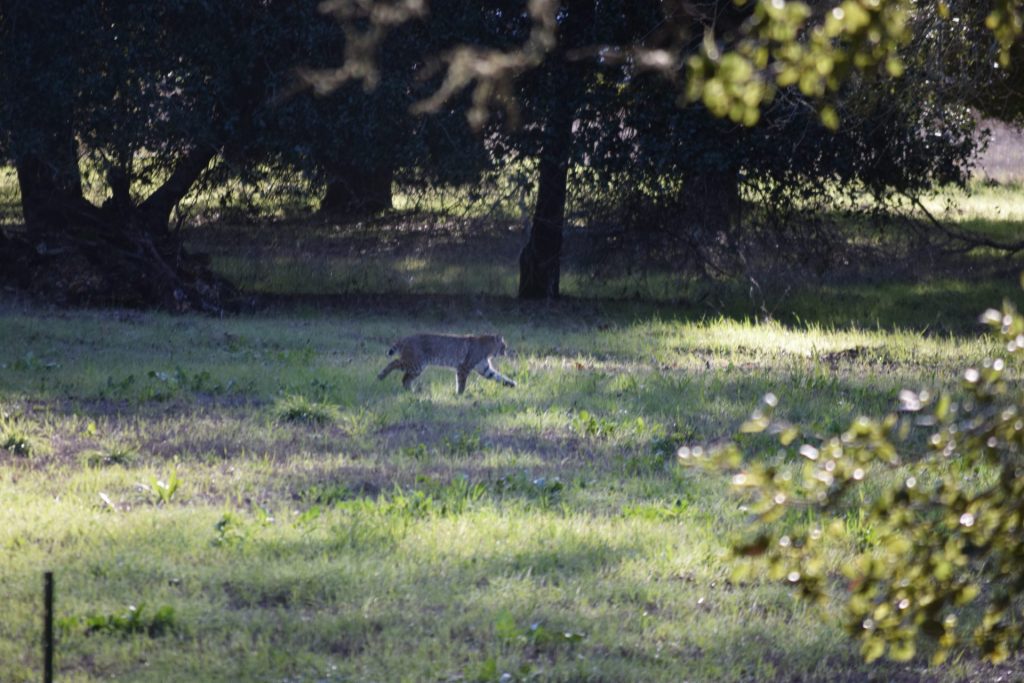
The likely fugitive from justice, a really gorgeous Bobcat crossing from the chicken coop to the vineyard. Note the telltale striping on the front left leg.

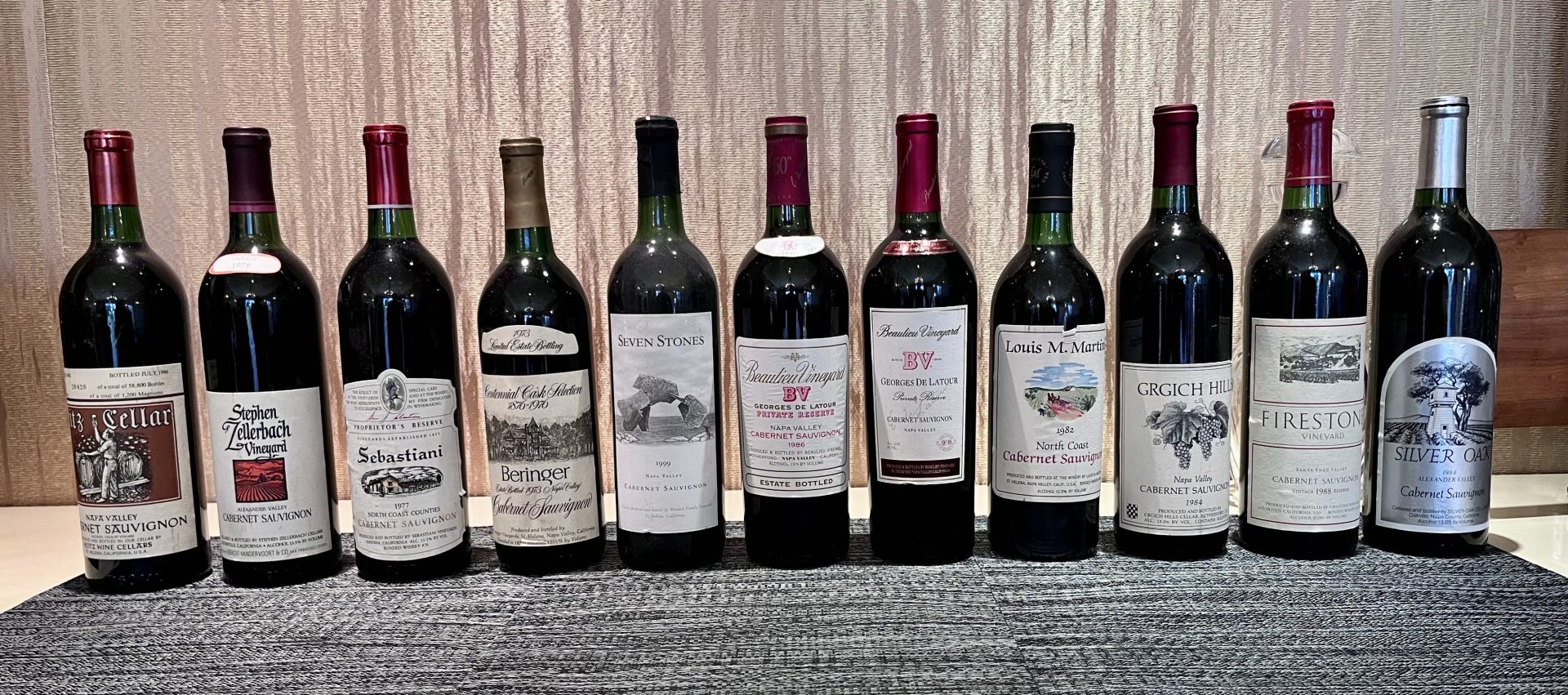




0 Comments